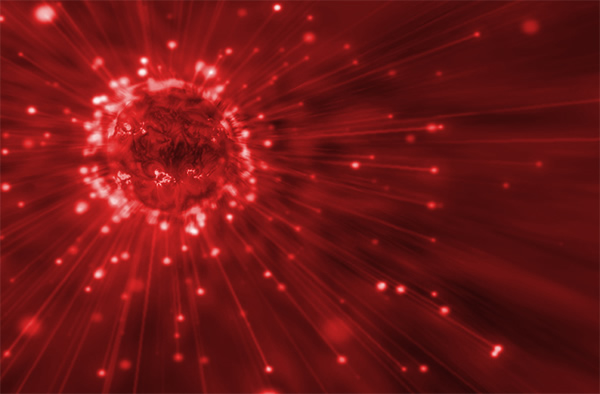Has the Weirdest Star in the Universe Been Found?
Leave it to astrophysicists to think up some strange stars, many of which remain rooted firmly in theory — or even bordering on science fiction. But astronomers have announced the discovery of a Thorne-Żytkow object, potentially putting a weird “hybrid” star on the stellar map as a very real phenomenon.
In 1975, astrophysicists Kip Thorne, of the California Institute of Technology (Caltech) in Pasadena, Calif., and Anna Żytkow, of the University of Cambridge, UK, published a theoretical paper in the Astrophysical Journal describing a rare, dying star with a surprise in its core. According to Thorne and Żytkow, it is possible for a red supergiant star to collide with a superdense neutron star, the remnant of a supernova, swallowing it. A red supergiant can merge with a binary partner neutron star, or that both occupied a dense globular cluster.
Once the neutron star is eaten, it settles in the core of the supergiant, interrupting normal fusion processes inside the star’s guts. This, according to the theorists, should create a very specific chemical signature in the “host” star’s chemical make up. What’s more, there should be a few dozen Thorne-Żytkow object specimens in our galaxy.
Over the past 40 years, according to Nature News, astronomers have observed a handful of Thorne-Żytkow object candidates, but none have been confirmed.
Today, astronomer Emily Levesque, of the University of Colorado in Boulder, has reported the discovery of another Thorne-Żytkow object candidate, the strongest candidate to date. Levesque announced her discovery at the 223rd American Astronomical Society meeting in Washington, D.C., but fell short of naming the particular star as her research has yet to be published in a peer-reviewed journal.
What is known, however, is that the star is one of 22 supergiants surveyed in the Small Magellanic Cloud, a dwarf galaxy next door to the Milky Way, by the Magellan telescopes in Chile. The mystery oddball stellar behemoth has elevated quantities of lithium, rubidium and molybdenum — elements that are theorized to arise from the presence of a neutron star inside a red supergiant, forcing the old star to carry out different forms of fusion processes.
“What we found is the most compelling observational evidence for this model of stellar interior,” said Levesque.
Although this specific star has less of the elements expected of a Thorne-Żytkow object, the evidence has convinced Thorne that this just might be the object that confirms his 40 year old astrophysical theory. It will be interesting to read Levesque’s published work when it becomes available.(Jan 7, 2014 04:01 PM ET // by Ian O'Neill)












